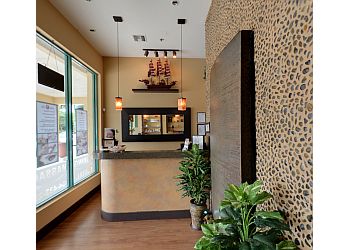Chiropractors are more successful rate in decompression of the spine and poststroke spasticity. They are also more adept in relaxation techniques.

Tui Na (pronounced twee-naw) is a term used to describe various forms of Traditional Chinese Medicine (TCM), therapeutic manipulations and body work. Tui Na is traditionally employed to treat physical and emotional discomfort like restlessness, depression, insomnia, anxiety and irritability. It is also used for the diagnosis and management of other conditions like constipation, asthma, arthritis, fatigue, headache, menstrual cramps and sports injuries, among many more. Tui Na is not usually employed for leisure and pleasure but rather as a part of the diagnosis and treatment procedure for specific disorders.
The advantages of Tui Na The benefits of Tui Na are not completely appreciated in Western medicine, however, studies show that it offers some benefit for those suffering from mild to moderate pain, especially when used during times of high stress. In a July 2021 issue in The American Journal of Sports Medicine Four researchers wrote on a study of twelve stroke patients who had been treated with Tui Na during the time they were in hospital. The patients had normal symptoms and levels of anxiety, fatigue and depression. Three of the twelve Spasticity patients received treatment and showed improvement. Two of the patients did not show improvement or worsened. No between-group differences were noted in the time or treatment effects on the variables of pain, functioning, or mood.
Twelve articles on tui na were used to define and draw conclusions by researchers. One was a meta-analysis, another was a crossover study and the other six were from the actual published article. The meta-analysis was a comparative study of 12 published articles on spasticity and tui Na, using different databases and different reporting formats. It showed a statistically significant mean change, with higher-quality results for spasticity compared to tui na.
The crossover study is a secondary study that assessed the results of two treatments: physiotherapy paired with physical therapy, and the effect of chiropractic treatment on the degree of upper limb spasticity following a stroke. While there was no significant difference, chiropractic care alone had a significantly stronger impact than physiotherapy. A subgroup of patients comparing those within 1 month of their onset to those with advanced and severe disease demonstrated a significant treatment effect. The other groups were not more effective than chiropractic care in this subgroup. Thus, the researchers concluded that chiropractic care could be beneficial following stroke.
The study that came in third is the biggest of its kind and most promising. It is a comparison of Chinese medicine with chiropractic medicine in poststroke spinal cord stimulation. Both groups had similar symptoms. SCT is a procedure that increases nerve compression and decreases muscle tone to help in recovering. This procedure involves inserting needles into specific points along the spine column. While both methods can be beneficial, Chinese massage experts seem to have a head start in terms of healing time and pain control.
The scan was conducted by chiropractors who used diagnostic imaging software. Next, they used manipulative hands on the spine and upper extremities. After a four-week period of treatment, there was significant improvement in all aspects of the patients studied. The percentage of improvement was much greater for chiropractors than surgeons. One month later, the post-stroke spasticity had diminished. For most patients it was not required. Spinal mobilization didn't cause stiffness or soreness.

Chiropractors had higher percentages of patients successfully treated however their success rates were lower than those of surgeons. Those patients randomly assigned to chiropractors had a greater rate of total improvement by the conclusion of the four-week post-stroke Spinal decompression time. In the initial month of treatment there was no significant difference between the patients at their post-operative appointments. Random assignment was carried out to determine which group showed the greatest improvement. Surprisingly, the chiropractors showed better improvement than surgeons at both preoperative and postoperative appointments.
The research was carried out by Drs. Maurer, Kornmehl, and Jick, all of whom are acknowledged as leading experts in spinal health. This study is noteworthy because of the significance of chiropractic treatment for patients suffering from stroke and their families.
